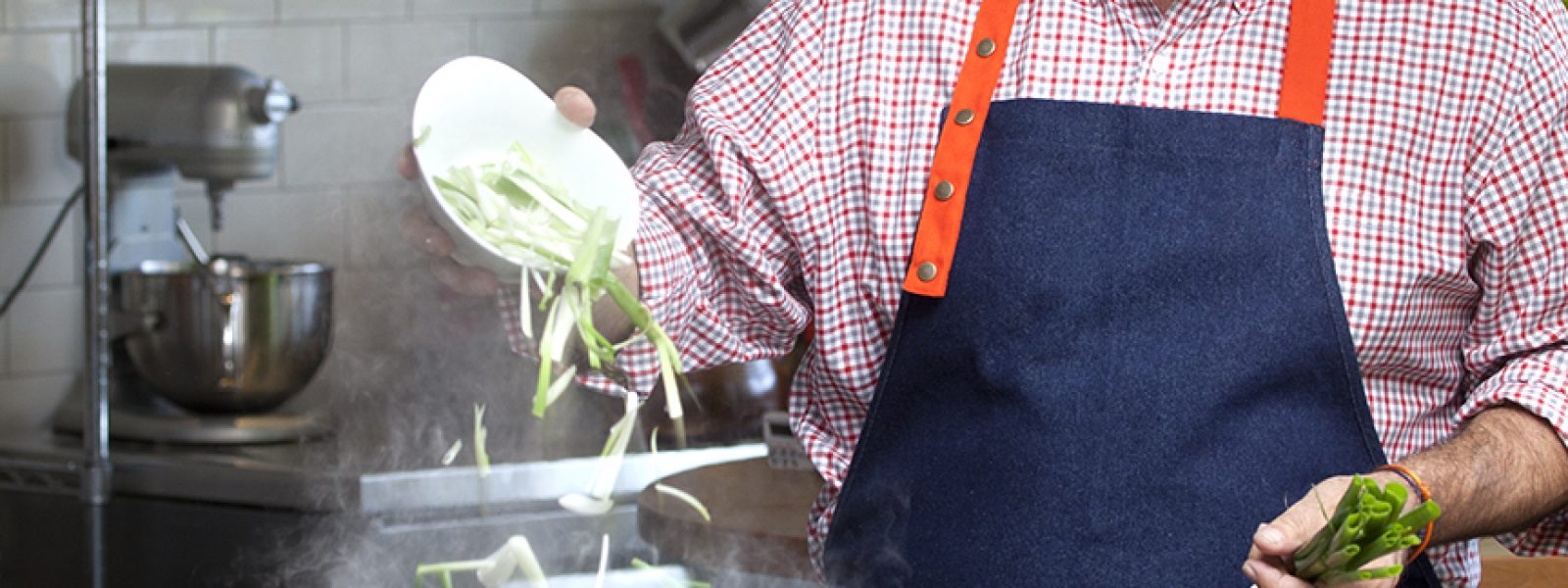Wok Cooking Essentials
Wok cooking is intimidating, but it’s the most versatile and handy tool in your kitchen. It can braise, fry, sauté, and even make a handy smoker (I use one of my woks fitted with a small inset grate to tea smoke duck and squab all the time). Because of its unique shape, the wok requires some special cooking techniques and ideas.
Get a good one.
I have several. Remember for stir-frying, don’t use a wok bigger than 16 inches. Once it has food in it, you won’t be able to work very efficiently. I also have several thin carbon steel woks that I use exclusively for frying and smoking, all flat bottomed with long handles.
Never overfill the wok.
The food will not cook quickly enough. More importantly you need a spare cooking environment to bring out the “wok hei”—the signature smoky dragon’s breath flavor of good wok cookery.
Mis en place is everything.
Prepare all of your food ingredients before you begin cooking. Make sure they are organized at your work space and that you know what your moves are going to be. Separate the main ingredients from sauce ingredients and aromatics if that helps. The wok cooks very quickly at high heat levels, so you need to be at the wok at all times. Prep is crucial.
Pre-heat the wok before doing anything.
Even before you add oil to the wok, it should be preheated until it begins to smoke. A well-seasoned and properly cleaned wok will always have micro pores in the metal that hold some oil/food particulate—that’s a good thing. Your wok will talk to you by smoking and tell you when it’s ready, releasing the flavor stored in the wok before you add the oil. Once the oil is added, the pores will begin to close.
Use the right oil.
For wok cooking, use oils with a high smoke point and low polyunsaturated fat content. Grapeseed oil, peanut oil, etc… Sesame oil and olive oil will burn and taste bitter. Oils with high polyunsaturated fat contents like soybean oil will also turn your food texturally unpleasant.
Turn the heat up.
The key to cooking with a wok is lots of controlled, high heat levels. The heat must be very high so you hard-sear the food. I recommend burners of 15,000 BTU to reach the right temps. With heat that high you will be able to get the flavors and textures that can only come from a wok.
Gas burners are crucial.
Electrical elements don’t cut it. With a gas burner, the flame can be adjusted and the effect of dampering heat is immediate; that allows you better control over your wok so that the food does not burn. Lowering temps can also be attained by moving pan off the heating source as well, but gas is quicker on the uptick.









